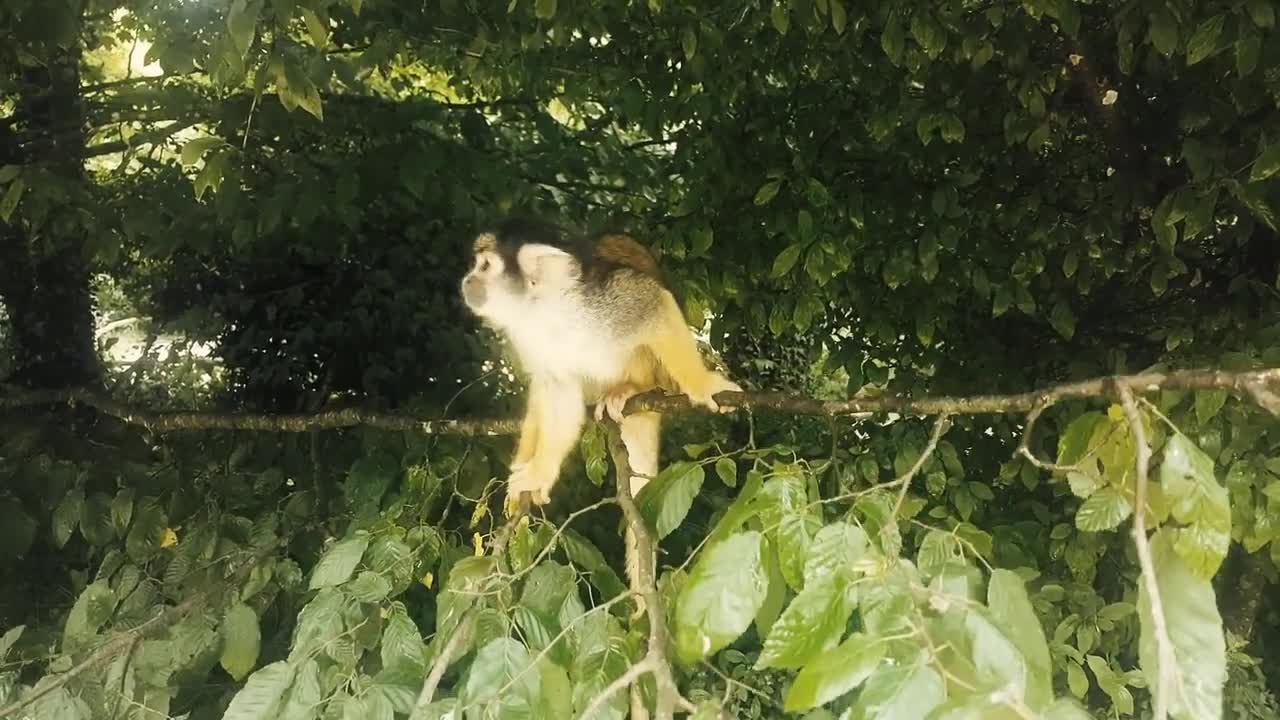Premium Only Content

Baby Monkey 🐒 Real Life 😍 In Jungle 🙈Cutests Baby Monkey In The World
Baby Monkey 🐒 Real Life 😍 In Jungle 🙈Cutests Baby Monkey In The World
Monkey is a common name that may refer to groups or species of mammals, in part, the simians of infraorder Simiiformes. The term is applied descriptively to groups of primates, such as families of New World monkeys and Old World monkeys. Many monkey species are tree-dwelling (arboreal), although there are species that live primarily on the ground, such as baboons. Most species are mainly active during the day (diurnal). Monkeys are generally considered to be intelligent, especially the Old World monkeys of Catarrhini.
Simians and tarsiers emerged within haplorrhines some 60 million years ago. New World monkeys and catarrhine monkeys emerged within the simians some 35 million years ago. Old World monkeys and Hominoidea emerged within the catarrhine monkeys some 25 million years ago. Extinct basal simians such as Aegyptopithecus or Parapithecus [35-32 million years ago], eosimiidea and sometimes even the Catarrhini group are also considered monkeys by primatologists.[3][4][5][6][7][8][9]
Lemurs, lorises, and galagos are not monkeys; instead they are strepsirrhine primates. Like monkeys, tarsiers are haplorhine primates; however, they are also not monkeys.
Apes emerged within "monkeys" as sister of the Cercopithecidae in the Catarrhini, so cladistically they are monkeys as well. There has been resistance to directly designate apes (and thus humans) as monkeys, so "Old World monkey" may be taken to mean the Cercopithecoidea or the Catarrhini.[10][11][12][13][14][15][9][16][17][18] That apes are monkeys was already realized by Georges-Louis Leclerc, Comte de Buffon in the 18th century.[19]
Monkeys, including apes, can be distinguished from other primates by having only two pectoral nipples, a pendulous penis, and a lack of sensory whiskers.
Historical and modern terminology
According to the Online Etymology Dictionary, the word "monkey" may originate in a German version of the Reynard the Fox fable, published circa 1580. In this version of the fable, a character named Moneke is the son of Martin the Ape.[21] In English, no very clear distinction was originally made between "ape" and "monkey"; thus the 1911 Encyclopædia Britannica entry for "ape" notes that it is either a synonym for "monkey" or is used to mean a tailless humanlike primate.[22] Colloquially, the terms "monkey" and "ape" are widely used interchangeably.[23] Also, a few monkey species have the word "ape" in their common name, such as the Barbary ape.
Later in the first half of the 20th century, the idea developed that there were trends in primate evolution and that the living members of the order could be arranged in a series, leading through "monkeys" and "apes" to humans.[24] Monkeys thus constituted a "grade" on the path to humans and were distinguished from "apes".
Scientific classifications are now more often based on monophyletic groups, that is groups consisting of all the descendants of a common ancestor. The New World monkeys and the Old World monkeys are each monophyletic groups, but their combination was not, since it excluded hominoids (apes and humans). Thus the term "monkey" no longer referred to a recognized scientific taxon. The smallest accepted taxon which contains all the monkeys is the infraorder Simiiformes, or simians. However this also contains the hominoids, so that monkeys are, in terms of currently recognized taxa, non-hominoid simians. Colloquially and pop-culturally, the term is ambiguous and sometimes monkey includes non-human hominoids.[25] In addition, frequent arguments are made for a monophyletic usage of the word "monkey" from the perspective that usage should reflect cladistics.[26][27][28][29][30]
A group of monkeys may be commonly referred to as a tribe or a troop.[31]
Two separate groups of primates are referred to as "monkeys": New World monkeys (platyrrhines) from South and Central America and Old World monkeys (catarrhines in the superfamily Cercopithecoidea) from Africa and Asia. Apes (hominoids)—consisting of gibbons, orangutans, gorillas, chimpanzees, and humans—are also catarrhines but were classically distinguished from monkeys.[32][33][34][35] (Tailless monkeys may be called "apes", incorrectly according to modern usage; thus the tailless Barbary macaque is sometimes called the "Barbary ape".)
-
 0:05
0:05
KNKidsTV
5 years ago $0.01 earnedBaby snow monkey Cute animal
1.9K3 -
 0:14
0:14
KNKidsTV
5 years ago $0.02 earnedSnow baby monkey - Cute animal
2323 -
 0:09
0:09
Monkey Madness
4 years ago $0.01 earnedBaby monkey climbs goat
1.5K2 -
 1:44
1:44
dsummerlin
4 years agoBaby and best friend- monkey
108 -
 0:29
0:29
ViralHog
4 years ago $0.51 earnedBaby Monkey Playing with Water
1.52K4 -
 1:26:16
1:26:16
Michael Franzese
17 hours agoMenendez Brothers Denied Parole – Newsom Holds Their Fate
105K75 -
 2:36:02
2:36:02
I_Came_With_Fire_Podcast
16 hours agoSecret Origins of Transhumanism & The New Atlantis
28.2K15 -
 LIVE
LIVE
sophiesnazz
2 hours ago $0.01 earnedLETS TALK ABOUT BO7 !socials !specs
74 watching -
 LIVE
LIVE
MadHouseRetro
2 hours agoPUFFCO PIVIOT BUNDLE GIVEAWAY! and Spider-man 2 playthough!
87 watching -
 1:12:40
1:12:40
Wendy Bell Radio
12 hours agoPet Talk With The Pet Doc
61.9K32